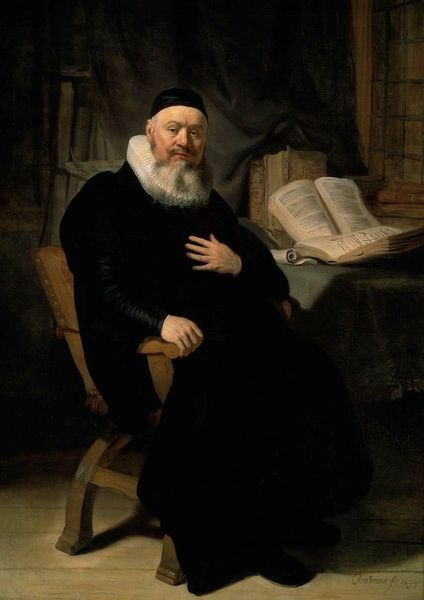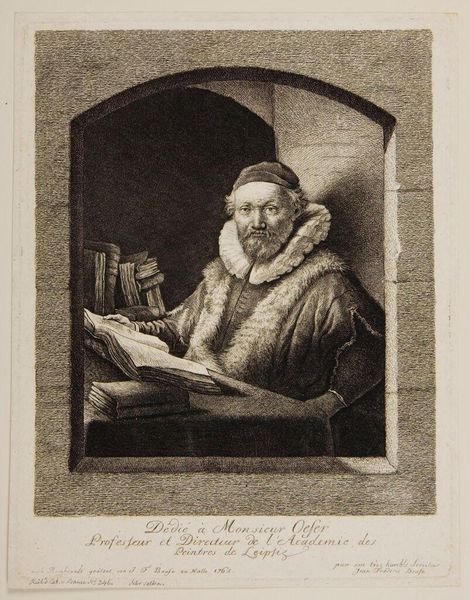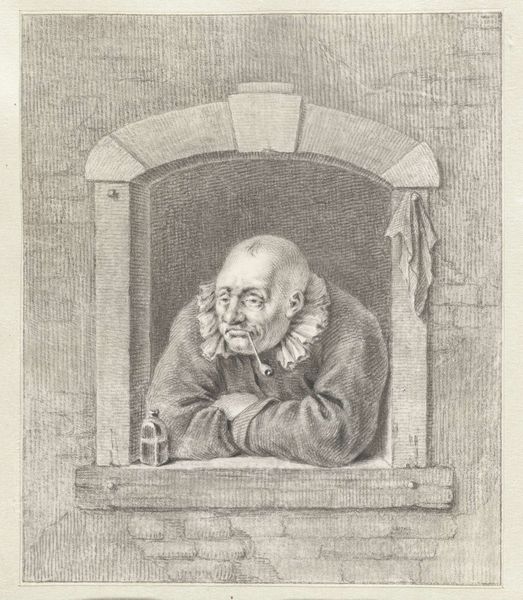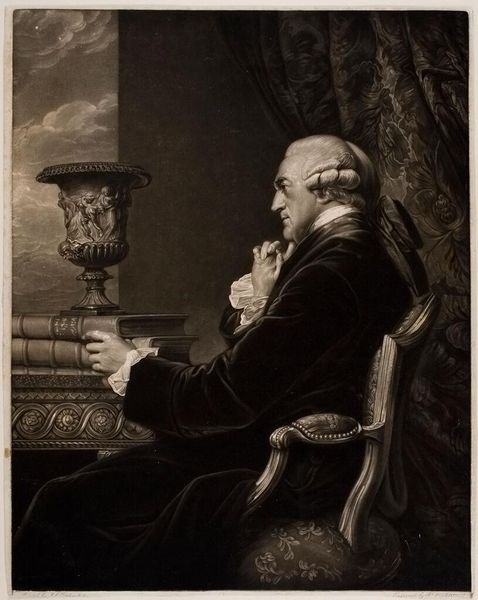
oil-paint, wood
#
allegory
#
baroque
#
oil-paint
#
chiaroscuro
#
monochrome photography
#
wood
#
monochrome
#
monochrome
Dimensions: 30.5 cm (height) x 24.5 cm (width) (Netto)
Curator: The somber stillness in front of us is *The Scholar and Death*, crafted between 1671 and 1680. Editor: My first impression is of stark melancholy. The monochrome palette intensifies the gravity of the scene, focusing all our attention on the skull. It appears so tangible—I can almost feel the cool smoothness of the bone. Curator: Precisely. Oil paint on wood—materials which were common at the time and allowed the artist to play with the textures of aging and mortality, a common Baroque theme as society reckoned with shifting societal values and widespread social unrest across Europe.. Editor: It's interesting that you point out its cultural significance. Beyond allegory, I’m drawn to the textures—the smooth skull juxtaposed with the scholar's robes. The lighting directs me to the material reality and I begin to understand it, maybe, as a physical representation of the passage of time and unavoidable demise. Curator: Absolutely, the way that chiaroscuro lights the painting underscores these themes in conjunction with the presence of death waiting. And yet the painting lives within the collection of the SMK—Statens Museum for Kunst. It continues to signify across time, reflecting a fascination with the role of a scholar amid larger socio-political themes, especially religious decline. Editor: How do you see its display within the museum impacting its meaning? To me, bringing this work into an institutional setting highlights not just death, but art itself being this tangible object that perseveres through its creation process and context. It exists to represent but its real. Curator: The museum’s selection of this piece confers its societal value and encourages audiences to think about life, death, and the societal structures impacting both. Editor: Fascinating. Seeing the artwork in terms of material process reveals its lasting significance beyond the canvas. Curator: It reveals that institutions often shape not just how we see the artwork but also their cultural role as a whole. Editor: Indeed, it leaves us contemplating mortality and craftsmanship across its temporal existence.
Comments
No comments
Be the first to comment and join the conversation on the ultimate creative platform.













